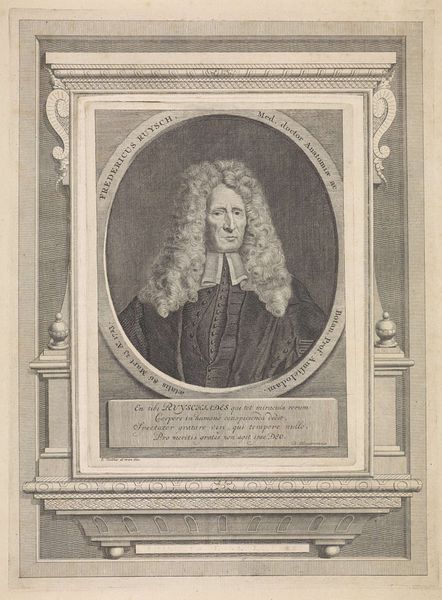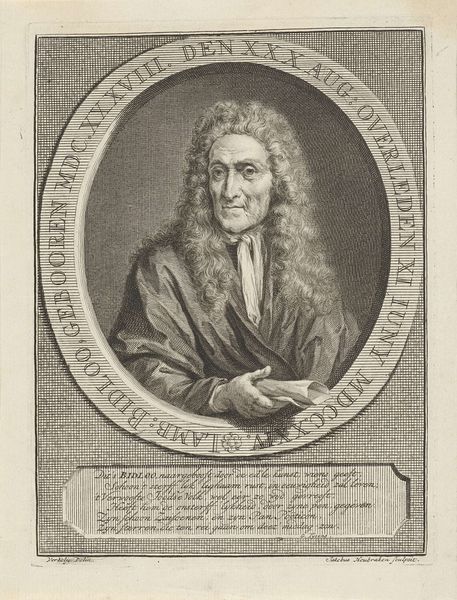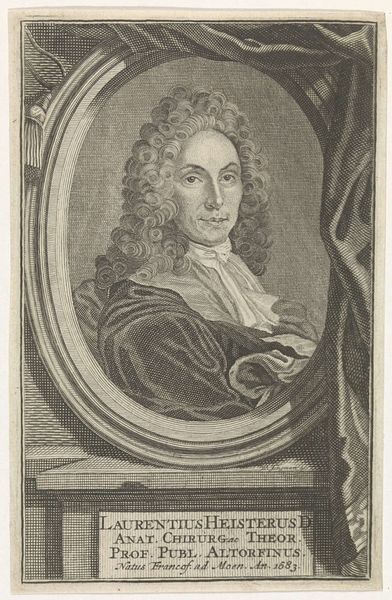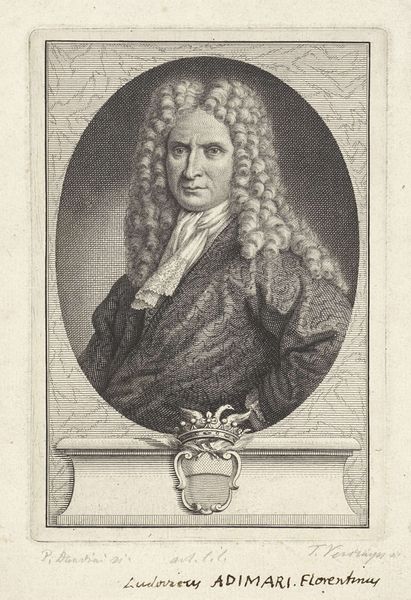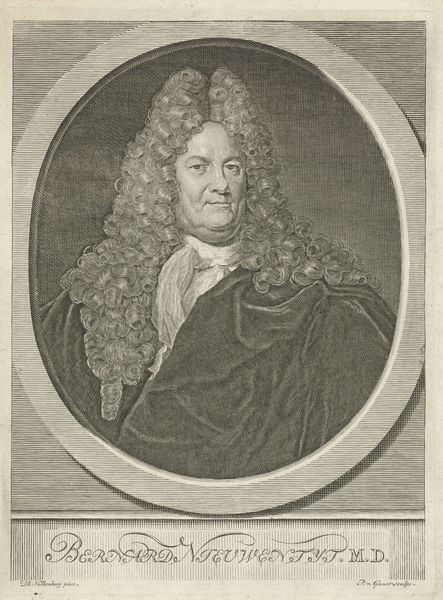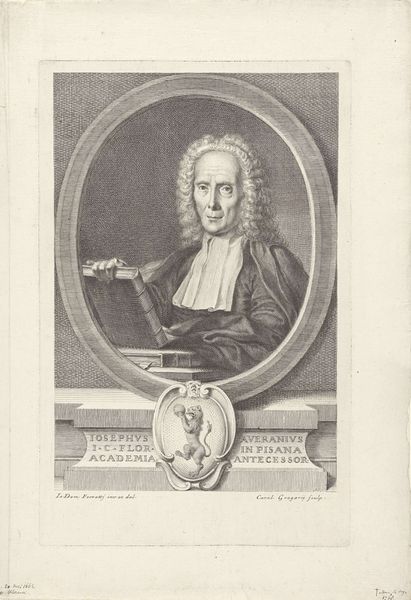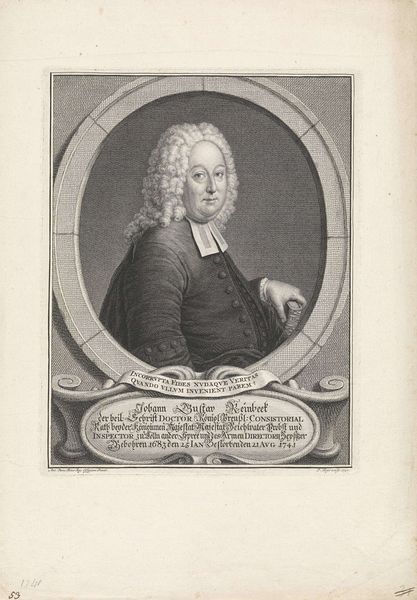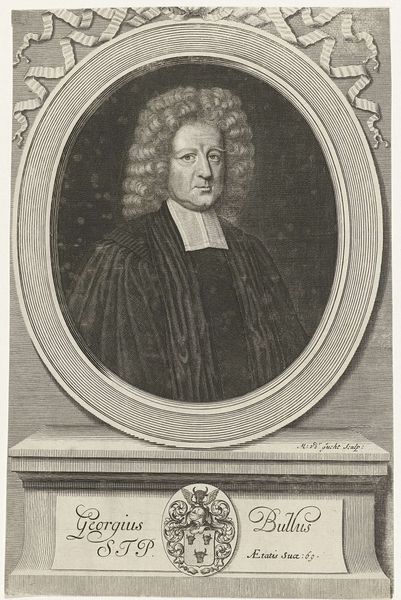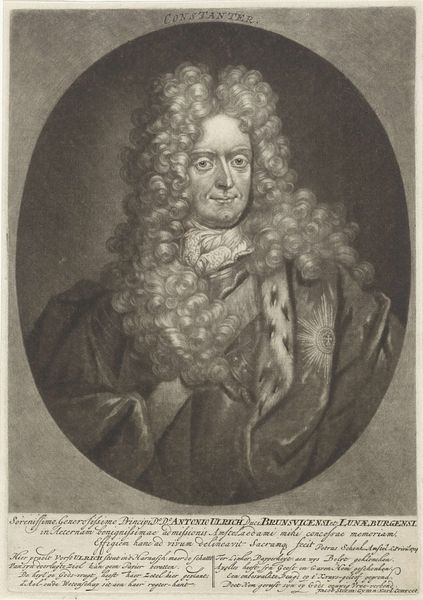
engraving
#
portrait
#
baroque
#
old engraving style
#
history-painting
#
engraving
Dimensions: height 224 mm, width 170 mm
Copyright: Rijks Museum: Open Domain
This print of Quirinus van Blankenburg was likely made using etching or engraving, processes that demand specialized knowledge of metallurgy, acid resist application, and controlled mark-making with sharp tools. The image exists because of a confluence of factors. Firstly, the depicted man, a philosopher, medic, and composer, wanted to memorialize himself. Secondly, there was a skilled artisan who had mastered printmaking. Finally, there was a market for such images among a literate and image-consuming public. Look closely, and you'll see the dense network of fine lines on the sitter's face and clothing, the deliberate textures created to mimic the tones and surfaces of reality. The engraver had to have complete control over the burin to produce such detail. Consider the intense labor embedded in the matrix – the metal plate from which this print was pulled. Printmaking served the growing bourgeois class and the scientific revolution, allowing for the reproduction and circulation of images and ideas, a function as vital then as digital media are today.
Comments
No comments
Be the first to comment and join the conversation on the ultimate creative platform.


